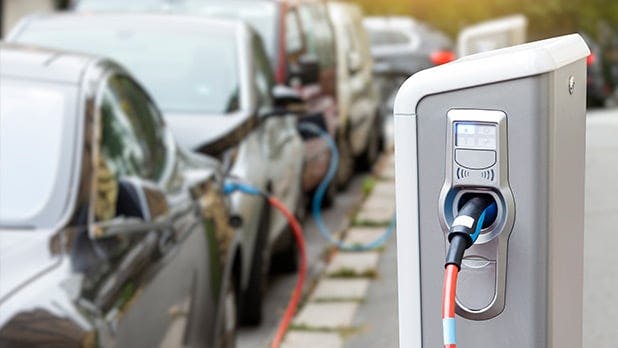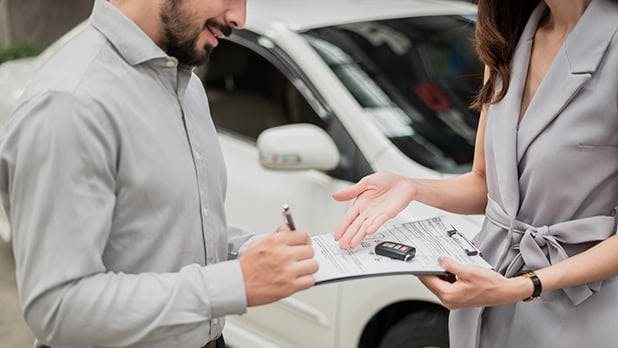Car insurance add-ons to consider
- Planning ahead
- Auto insurance

Auto insurance coverage can be complicated. There are a lot of options to personalize your coverage and basic policies cover so much – damage to your vehicle, injuries to you and your passengers following an accident, theft and even damage to other people’s property in accidents caused by the policyholder. With standard car insurance policies covering so much, car insurance add-ons can sometimes seem like overkill. However, these add-ons, also known as endorsements and riders, cover things that could make your life easier.
Add-ons enhance car insurance
Car insurance add-ons are optional enhancements that can be added to your existing auto insurance coverage to provide additional protection for specific events. This allows you to tailor your coverage to meet your specific needs. You’ll get the collision and comprehensive coverage you need and the add-ons you want without having to pay for the optional coverages that aren’t right for you. Add-on options should be made available to you when you get car insurance quotes, but you can talk to your insurance company, or the VIU by HUB Advisory Team, to add these coverages at any time.
Ready for a fresh perspective?
Imagine expert advice, instant insurance quotes and all your policies, all in one place.
Car insurance add-ons explained
Some of the most common car insurance add-ons are listed below.
Paid car insurance add-ons
- Roadside assistance – Roadside assistance, also known as towing and labor coverage, helps during a breakdown or other road-related problem. This typically includes services such as towing, tire changes, jump-starts, fuel delivery and lockout services. The specific services offered, and the terms of coverage can vary so be sure to check your policy.
- Gap insurance – Gap insurance helps cover the difference between the amount you still owe on a car loan and the actual cash value of the vehicle in the event of a total loss. Theft or collision are common causes for a total loss of vehicle. Here is an example:
- You took out a car loan for $30,000. You have paid some back but still owe $25,000 to the bank. The vehicle is worth $22,000 today. If you’re in an accident, your collision coverage will pay $22,000, the value of the vehicle. Gap insurance would pay the additional $3,000 you need to pay off your loan.
- Loan payoff insurance – Loan payoff insurance is a form of gap insurance that pays up to 25% of the actual cash value of your vehicle if it’s declared to be a total loss. There are two primary differences between loan payoff insurance and gap insurance:
- Loan payoff insurance can be purchased at any time, not only when purchasing a new car.
- Gap insurance will cover the difference between the cash value and loan amount regardless of what that amount is. Loan payoff insurance is limited to 25% of the cash value of the car.
- Both coverages are car insurance add-ons that pay out for the total loss of the vehicle beyond what your comprehensive or collision coverage pays.
- New vehicle replacement – New vehicle replacement insurance provides coverage for a new car if your car is deemed a total loss within a specified period of time post-purchase, usually within the first two years of ownership. The policy covers the cost of a new car, of the same make and model, without considering depreciation or the mileage of the damaged vehicle. New vehicle replacement coverage and gap insurance coverage are related car insurance add-ons: after the loss of your car, gap insurance coverage will cover the balance of that car’s loan and new car replacement coverage will provide you with a new vehicle.
Gap insurance coverage will cover the balance of that car’s loan and new car replacement coverage will provide you with a new vehicle.
- Customer parts and equipment coverage – Customer parts and equipment (CPE) coverage is for custom or aftermarket parts and equipment that are added to a vehicle. These parts and equipment are not typically covered under a standard auto insurance policy and can include items such as custom wheels, spoilers, audio systems and performance upgrades.
- Rental car reimbursement – Rental car reimbursement insurance covers rental car costs if your vehicle is stolen or damaged and is unable to be driven. The coverage reimburses the cost of a rental car, up to a specified amount per day, while your car is being repaired or replaced.
- Comprehensive coverage – Comprehensive coverage provides financial protection after damage to your vehicle from events other than a collision. This might include theft, vandalism, fire, natural disasters and damage caused by animals. For example, if your car is stolen or a tree falls on it, comprehensive coverage would cover the cost of repairs or replacement. It does not cover losses that are the result of a collision. While this coverage is not legally mandated anywhere, most lenders will require you to have this coverage until your car is paid in full.
- Consumables coverage – Consumables coverage pays for certain maintenance items that are part of normal vehicle wear and tear. Some covered items are oil, brake pads, batteries and tires.
- Key loss cover – Key loss cover, also known as key replacement cover or key insurance, covers the cost of replacing a lost or stolen car key. This is offered by some insurance carriers as a part of their comprehensive coverage.
- Uninsured motorist coverage – Uninsured motorist coverage provides coverage if you are involved in an accident with an uninsured driver who is unable to pay your damages. It can also provide coverage for medical expenses and lost wages if you are injured in the accident. In no-fault states, your car insurance policy will already cover these situations under the name personal injury protection.
- Medical payments coverage – Medical payments coverage pays for injuries that you and your passengers sustain in an auto accident. In states with no-fault insurance, this is called personal injury protection.
- Rideshare coverage – Rideshare coverage is for people who drive for ridesharing services such as Uber or Lyft. The company that you’re driving for likely offers some coverage for drivers, but this is only active when you have a rider in your vehicle, not between rides or while you’re parked and waiting. Most insurance companies require this coverage if you’re doing rideshare work. Call your carrier or the VIU by HUB Advisory Team to see what your car insurance policy says about these activities before you start driving for a rideshare service.
- OEM – OEM coverage, which stands for original equipment manufacturer coverage, covers the replacement of damaged original equipment parts, rather than aftermarket or non-OEM parts. This can help to maintain the car’s value and performance.
Unpaid car insurance add-ons
These final car insurance add-ons aren’t add-ons in the same way as the others. These are programs that some insurance companies offer. Ask about these programs when you get your car insurance quotes if they are important to you.
- Telematics – Telematics is a car insurance add-on that uses a device to track your driving. The data collected from the device is used to calculate discounts to your premium based on your driving behavior and distance driven. These programs can get you a rate that is fair, affordable and personalized.
- No claim bonus protection – Many insurance companies offer a discount on the premium amount for each year you are claim-free. With no claim bonus protection, you can preserve your claim-free streak and the associated discount even if you need to make a claim.
- Vanishing deductible – Vanishing deductibles, also called disappearing deductibles, reduce your deductible for every consecutive year that you remain claim-free. This provides a financial incentive for maintaining a good driving record and can even result in a $0 deductible with some policies if you are claim-free for long enough.
- Accident forgiveness – Accident forgiveness protects against premium increases resulting from your first at-fault accident. To qualify, you may need to be accident-free for a number of years. Note that this protection typically applies only to the first accident. Subsequent accidents may still result in an increase in your premium.
Determine what add-ons are necessary
The car insurance add-ons that are right for you will depend on your personal circumstances, the type of vehicle you own and even where you live. Use the list above to get an idea of what coverages you might want to add to your car insurance policy and then reach out to the VIU by HUB Advisory Team, or your insurance company, to discuss the coverages you’re interested in and verify that they’re right for your circumstances.
A panoramic outlook on
all things insurance
The VIU Point is here to help you make sense of it all, so you can confidently compare auto insurance quotes and make the best policy decisions.


